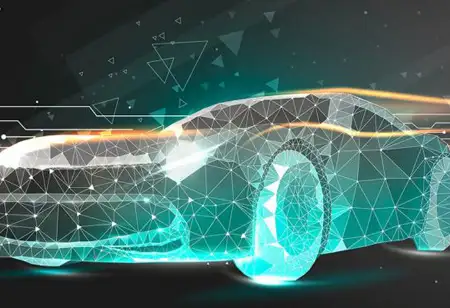Thank you for Subscribing to Auto Business Outlook Weekly Brief
Safety and Security: Driving the Future of the Auto Industry
Safety and security have always been paramount considerations in the auto industry.

By
Auto Business Outlook | Tuesday, July 11, 2023
Stay ahead of the industry with exclusive feature stories on the top companies, expert insights and the latest news delivered straight to your inbox. Subscribe today.

Safety and security are at the core of the auto industry's mission to protect drivers, passengers, and the community.
FREMONT, CA: Safety and security have always been paramount considerations in the auto industry, and as technology continues to advance, manufacturers are placing an even greater emphasis on protecting drivers, passengers, and vehicles. The auto industry is evolving from advanced driver assistance systems (ADAS) to cybersecurity measures to ensure safety and protect against emerging security threats. This article explores the significance of safety and security in the auto industry and highlights the innovations shaping the future of automotive safety.
Enhanced Driver Assistance Systems: Advanced driver assistance systems (ADAS) are revolutionizing automotive safety by incorporating innovative technologies to assist drivers and mitigate potential risks. Features such as lane-keeping assist, automatic emergency braking, adaptive cruise control, and blind-spot detection help prevent accidents and reduce the severity of collisions. ADAS technologies leverage sensors, cameras, and artificial intelligence to provide real-time alerts, improve situational awareness, and enhance driver decision-making capabilities.
Autonomous Driving and Accident Prevention: The development of autonomous driving technologies promise a future with significantly reduced accident rates. Self-driving cars, equipped with advanced sensors, machine learning algorithms, and extensive mapping systems, can potentially eliminate human error, the leading cause of accidents. Autonomous vehicles can constantly monitor their surroundings, make split-second decisions, and react faster than human drivers. As these technologies advance and gain regulatory approval, the industry is poised for a significant shift in safety standards.
Cybersecurity Measures for Connected Cars: As vehicles become increasingly connected through internet connectivity and advanced infotainment systems, ensuring cybersecurity is a critical concern. The industry recognizes the importance of protecting vehicles from cyber threats and unauthorized access. Manufacturers are implementing robust cybersecurity measures to safeguard critical systems, including data encryption, secure communication protocols, and over-the-air software updates. Collaboration with cybersecurity experts and constant monitoring of emerging threats are essential to stay ahead of potential vulnerabilities.
Impact Mitigation and Occupant Protection: Vehicle safety goes beyond accident prevention. In the unfortunate event of a collision, minimizing the impact and protecting occupants is essential. Automotive manufacturers employ advanced safety features such as crumple zones, reinforced frames, airbags, and seatbelt pre-tensioners to effectively absorb and distribute crash forces. Additionally, developing pedestrian detection systems, improved headlight technologies, and crash-avoidance systems contribute to reducing the severity of accidents and protecting vulnerable road users.
Intelligent Infrastructure and Vehicle-to-Everything (V2X) Communication: Intelligent infrastructure and vehicle-to-everything (V2X) communication is gaining momentum in pursuing safer roads. V2X technology allows vehicles to communicate with other vehicles, pedestrians, traffic lights, and road infrastructure in real-time. This enables proactive collision avoidance, traffic flow optimization, and warnings about road hazards. V2X communication can significantly reduce accidents and improve overall road safety by enhancing connectivity between vehicles and their environment.
Regulatory Standards and Consumer Awareness: Regulatory bodies are crucial in shaping automotive safety standards and ensuring compliance. Governments worldwide are enacting and enforcing crash safety, emissions, and cybersecurity regulations. Stricter safety standards push manufacturers to invest in safety technologies and continuously improve vehicle designs. Furthermore, consumer awareness and demand for safe vehicles significantly impact manufacturers' priorities. Informed consumers increasingly consider safety ratings and advanced safety features when purchasing, influencing the industry's focus on safety advancements.
Conclusion: Safety and security are at the core of the auto industry's mission to protect drivers, passengers, and the community. With technological advancements, the industry is witnessing a transformative era in automotive safety. From advanced driver assistance systems (ADAS) to autonomous driving, cybersecurity measures, to impact mitigation, the focus on safety is evolving to meet the demands of an increasingly connected world. Regulatory standards and consumer awareness also play pivotal roles in driving the industry's commitment to safety. As the auto industry progresses, the continuous pursuit of safety and security will shape the future of transportation, creating safer roads for everyone.






